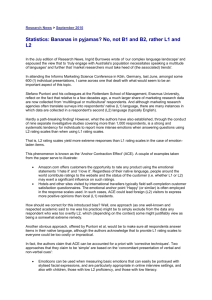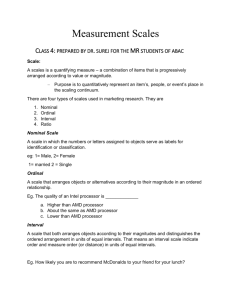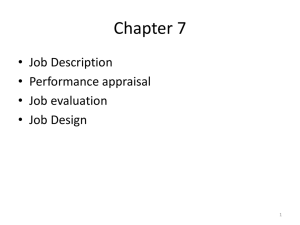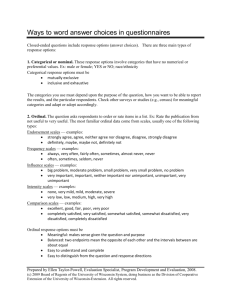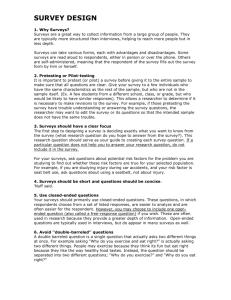Scaled Survey Questions - Center for Teaching and Learning
advertisement
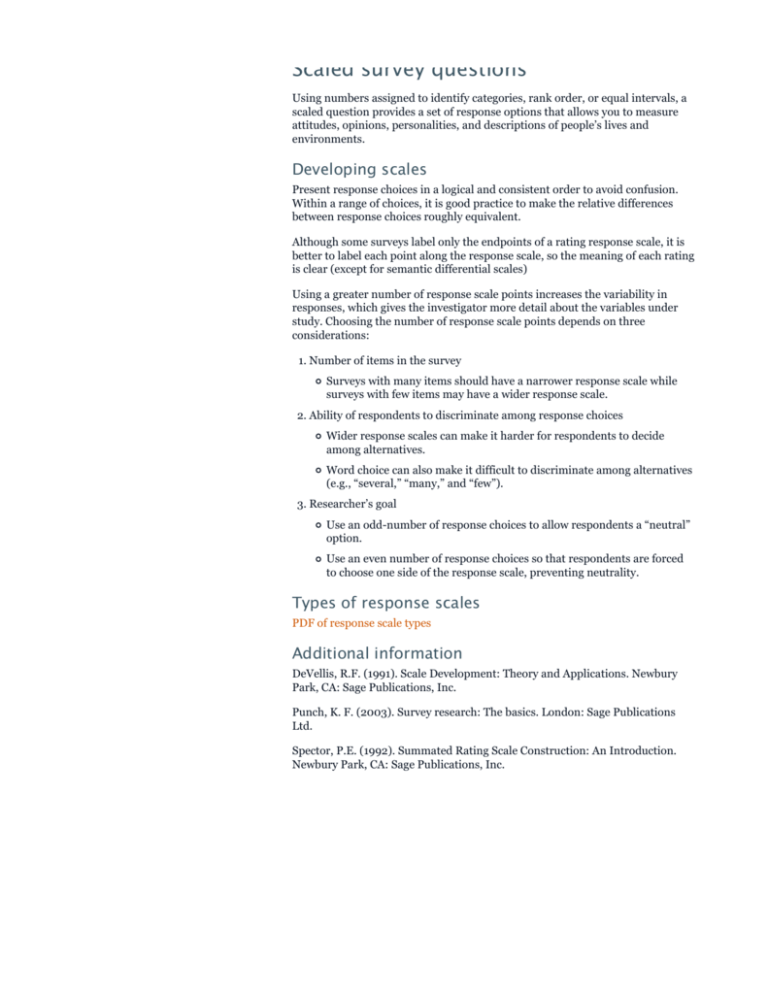
Scaled survey questions Using numbers assigned to identify categories, rank order, or equal intervals, a scaled question provides a set of response options that allows you to measure attitudes, opinions, personalities, and descriptions of people’s lives and environments. Developing scales Present response choices in a logical and consistent order to avoid confusion. Within a range of choices, it is good practice to make the relative differences between response choices roughly equivalent. Although some surveys label only the endpoints of a rating response scale, it is better to label each point along the response scale, so the meaning of each rating is clear (except for semantic differential scales) Using a greater number of response scale points increases the variability in responses, which gives the investigator more detail about the variables under study. Choosing the number of response scale points depends on three considerations: 1. Number of items in the survey Surveys with many items should have a narrower response scale while surveys with few items may have a wider response scale. 2. Ability of respondents to discriminate among response choices Wider response scales can make it harder for respondents to decide among alternatives. Word choice can also make it difficult to discriminate among alternatives (e.g., “several,” “many,” and “few”). 3. Researcher’s goal Use an odd-number of response choices to allow respondents a “neutral” option. Use an even number of response choices so that respondents are forced to choose one side of the response scale, preventing neutrality. Types of response scales PDF of response scale types Additional information DeVellis, R.F. (1991). Scale Development: Theory and Applications. Newbury Park, CA: Sage Publications, Inc. Punch, K. F. (2003). Survey research: The basics. London: Sage Publications Ltd. Spector, P.E. (1992). Summated Rating Scale Construction: An Introduction. Newbury Park, CA: Sage Publications, Inc.
